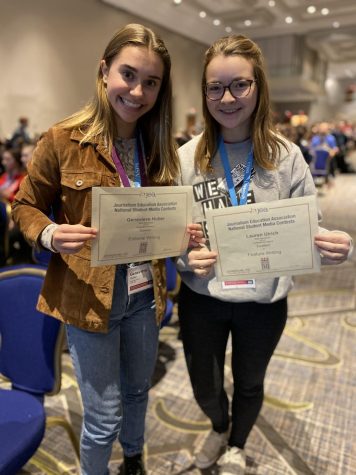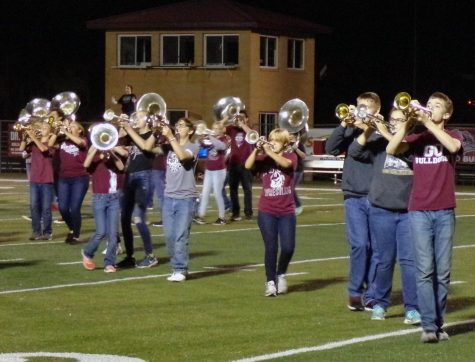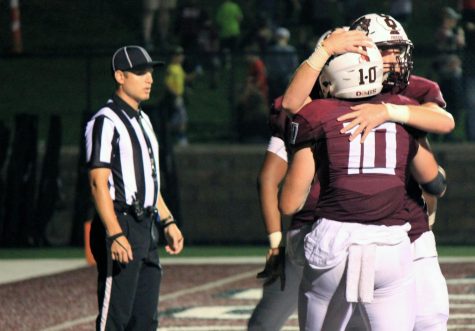Go home and go green
by Theodora Leventis
Environmental Engineering is a way of improving the natural environment. It uses the principles of engineering to provide healthy water, air and land for human habitation. Environmental engineering addresses the issue of energy preservation and control of human and animal waste. The engineers are responsible for waste water management, air pollution control, recycling, waste disposal, radiation protection, industrial hygiene, environmental sustainability and public health. According to environmental and civil engineer professor Joel Burken, the field of environmental engineering is sort of misnamed. They are more like public health engineers with the focus to protect human health through protecting the environment.
“As environmental engineers and working with public health, through time we have assessed what the biggest impact to our health is, and there’s kind of a saying within our field that environmental engineers save more lives than all doctors combined, and it’s very true. We look at a lot of countries and due to their poor water quality, they deal with infant mortality and rampant sickness, which is really detrimental to society and pulls you down a lot if people are sick on a regular basis. They are not as healthy to go to work and they can’t go to school and get educated, and the time spent trying to take poor water and deal with it individually is a huge burden. We deal with the health issue, but at the same time it frees people to be more productive in society, so we can move forward,” Burken said.
In making water safe for utilization, environmental engineers are responsible for taking out agricultural chemicals such as pathogens, sediment, lindbane and astrozone. Depending on the water quality as they get it out of the environment drives how they will treat it. Environmental engineers study the effect of technological advances on the environment. To do so, they conduct several studies to evaluate the significance of hazards and advise treatment and develop regulations to prevent mishaps. With what used to be a former problem with activities such as dry cleaning and machining parts, S&T students are now working to fix the damage that was created from disposing toxants.
“So we’re working on an NSF grant with the north city of Rolla and with S&T students to put a buffer in, so we’ve planned it over 200 trees down at the edge of shuman park, and the reason for those trees is to chemically sample them to find out what the groundwater pollutants are below the trees without ever having to dig them up, but also those trees are actively pumping out that groundwater and releasing it to the environment. And the first question everybody asks is what brought the pollutants in the atmosphere, and they’re very short lived. These chemicals last in a subsurface where they’re protected from sunlight and much oxygen for decades, but once they’re in the atmosphere, they only last a few hours, because sunlight destroys them. So with no energy input, and just by planting trees in a park, we’re actually dealing with an environmental pollution problem right here,” Burken said.
Pollution is a major source of harm in the environment. People fail to see how dangerous it can become once it gets to a certain extent. There are people who work to keep the environment safe, but it is everyone’s job to do what they can to help the situation.
“On solid waste, it’s really obvious. If you buy something and it contains hazardous materials, they have to go somewhere, and are they going to go into a landfill? We try to make them safe, but we know forever is a very long time. So what we’re putting there is likely, at some point in time, to escape. So if we think about all the things we utilize or buy and if there are options that have a smaller shadow of afterlife, what are they going to be? That’s really important, and understanding that if you put pharmaceuticals down the toilet, they’re probably going to end up in some local stream. So understanding what we utilize is important and asking yourself, ‘What’s the next step in the life of that?’ The answer is medicine, product and chemicals we use. And if we can make a little bit smarter choices on what we bring into the environment, we’ll have a lot better outcomes and an easier job on our end to see what we put out in the environment later,” Burken said.
by Rahel Pommerenke
Although it’s common knowledge that the Missouri University of Science and Technology is a top engineering college, it’s lesser known that they are one of the most eco-friendly colleges. Their long term goal is to create engineers who will be aware of the environment and will go out to create a greener world.
“We’re educating our students to go out into the workforce so we’d much rather have students that are educated and aware in terms of sustainability and sustainable operations such that even if they’re not here at S&T if they go off and work at any company in any city they can still take some element of sustainability to that company to see if there’s any kind of focus area that their new employer can work towards as well,” Cory Brennan, a graduate student working in the Office of Sustainable Energy and Environmental engagement said.
One of the ways that the university works for a greener world is through the creation of their solar village, which can be found at the corner of 10th and Poole Street and with a second village coming soon. The village contains 4 prototype houses, the designs of which hopefully will one day become expanded upon and be spread worldwide.
Here at the solar village, smart living is energy efficiency, energy conservation, self awareness, resource stewardship and not only energy but water and waste generation. All of our tenants here at the solar village sign, or agree to sign, a sustainable living charter. Which means that they’ll do what they can to reduce their energy consumption, reduce their water consumption and generate the least amount of waste. It hasn’t been kind of pushed out to the residential halls yet, but that’s something that we’re working on is to push the sustainability charter such that anyone living on campus will try and do their best to use whatever resources they need the most efficiently. So that’s really what smart living means to us on a campus level and some of the signature research areas we’re focusing on,” Brennan said.
The goal of the houses is to be energy neutral, which means that they create as much energy as they use. Although they are tied to the Rolla municipal power grid in case of emergency, they strive to be completely independent. Rolla municipal power grid power is primarily coal generated, which is a nonrenewable resource and not indefinitely sustainable.
“On campus we also use geothermal, or ground source, heating and cooling. That was a 31 million dollar project that was just completed a month ago. So with that we kind of push heat into the ground during the summer months and we draw that heat out of the ground during the winter months. So we use the earth as a giant thermal battery. Other than that it’s really focusing on how can we use our energy and electricity across campus more efficiently. We decomissioned our power plant last may, so we are now a coal free campus,” Brennan said.
While it’s not every day that a 31 million dollar project takes place, there are many things students can do every day to become more eco friendly such as take S&T’s zero emissions E-Bus, or take advantage of the newly renovated bike paths and racks on campus. Some students go even further than these day to day things and are taking matters into their own hands. The Eco-Miners, a student group on campus, has made it their mission to install special water fountains on campus that have a faucet to refill water bottles.
“We have somewhere between 7 and 10 refillable water stations on campus. As more and more of our water stations come up for refurbishment we plan to install water bottle filling stations like that so we can reduce the number of water bottles on campus,” Brennan said.
Although the water stations are eco friendly, they are also more costly than a regular water station. However, a way to improve both sustainability and save money at the same time is to improve the insulation of a building.
“If you’re looking for any kind of way to save energy or save money or anything like that windows, window seals, and insulation are going to be your first step. Because if you can reduce the amount of energy that you’re wasting, you have to put less in,” Brennan said.
With all these initiatives, it should come as no surprise to learn that S&T can boast high international rankings for their sustainability consistently placing in the top 100 at a competition called Recyclemania.
“Recyclemania is a collegiate competition, and the focus of it is to analyze your waste for over two months and try and push better recycling and better waste diversion during those two months. It’s a competition, but we don’t win anything besides a couple of bragging rights. We compete with about 600 other universities from across the world. It’s normalized against how many students we have, but as long as per person we’re generating more recyclable content than they are we win,” Brennan said.
“This year they’re focusing more on the refillable water stations. In the past though I know they’ve done work with the library to help recycle old books that would have otherwise been thrown away in the trash. So recycled paper, and they do a lot of work with our office as well, so whenever we put on events like earth day or Recyclemania these benchmarking kinds of things they usually help with that,” Aaron Enz, a student worker at the Office of Sustainable Energy and Environmental Engagement said.
Waste auditing is a way to find out how many recyclables from a building are entering the waste stream. A couple of bags of trash are pulled from a building, and the contents are separated by weight into waste and recyclable items. This allows the auditor to determine how well the entire building is recycling.
“That helps us understand if a building needs better recycling services or whether they’re okay, and that helps us educate the students inside the building whether it’s students faculty or staff on the benefits of recycling,” Enz said.
by Maggie Duncan
Driving by the Rolla Technical Center at night might seem like driving past a winter wonderland. The bright lights reflect off of the asphalt creating a blanket of sparkles. This phenomenon is far from a miracle. Crushed glass, referred to as cullet, is mixed into the asphalt mixture, known as glassphalt. The recycling center initiated this change.
“We donated a couple hundred tons of glass, gladly,” Brady Wilson, director of the Environmental Service Department for the City of Rolla, said.
Glass is one of the many materials that are dropped off at the recycling center. Separated into two categories, clear and colored, the glass is deconstructed and reconstructed in separate organizations. The clear glass is shipped to Strategic Materials in St. Louis where it is crushed into cullet, and then resold to companies who process the loads into glass containers, ceramic tiles, and underlayments for pipes and glassphalt, which are in turn sold all over the United States.
The colored glass is shipped to Ripple Glass in Kansas City, where it is crushed, melted and molded into beer bottles which are filled by a local brewing company.
“We just give them the glass, and make the community happy,” Marcia Mayo, recycling specialist at the Recycling Center in Rolla, said.
The materials are recycled into a variety of objects, many of which can today be purchased at large department stores.
“A couple of years ago, these products were a lot harder to come by. Now if you go to Lowes or Walmart, you are going to see them there [more frequently] and the cheaper,” Mayo said.
The integration of such products into the consumer market has increased due to two main factors: the price and the availability. The prices of recycling items, for example, notebooks, have decreased in comparison to non-recycled items. This drop in price is caused by an increased number of people who recycle. The more materials which are given to recycling centers, such as the one in Rolla, the more products can be made, and thereby the lower the price. As people become more aware of the benefits of recycling, the availability of the materials increases, because more people contribute. This increase is also boosted by larger organizations, such as schools, providing their facilities with recycling bins.
Every classroom at Rolla High School has a recycling bin. The message that those bins send out to the student body as well as the teachers and any visitors is that our schools wishes to contribute to the long term benefits that recycling can have for our environment. When paper, the number one material that go unrecycled, lands in the trashcan instead of the recycling bin, it causes damage to the environment. For example, it takes seventeen fully grown trees to make one ton of paper. Considering the amount of paper that is used in the classrooms at Rolla High School, recycling makes a large impact.
“You’re throwing away great resources. It’s getting people to change their habits. Some people are going to be willing, and other simply don’t see a need,” Mayo said.
Despite the fact that some resources are renewable, others are not, many of which are used in the production of non-recycled products. Thereby, it is essential to recycle the materials which can be reused. The availability of recycling also plays a role in the number of people who recycle.
“I think it’s very important to keep a recycling bin right next to the trash can so that they have that option. A lot of times if they are walking out of the room and the trash can is right next to the door, they aren’t going to walk back into the room to the recycling bin and recycle their paper.
It doesn’t dawn on them,” Mayo said.
For many people, throwing things into the trash has become a habit, and in order to switch to separating the trash into actual waste, compost, plastic, glass and cans takes an understanding on how these resources can be reused and what good would come from recycling them.
“A lot of it comes down to education and whether students go out and look for the information themselves or whether it is introduced into the curriculum in the classroom,” Wilson said.
Educating others about the benefits of reusing instead of throwing away prevents many still useful productions, such as paper, cardboard and plastic from ending up in a landfill. The local recycling center, the only one in the twenty mile vicinity of Rolla, recycles paper and cardboard out of all of the other materials.
“We ship four to six loads of cardboard a month, and one load of high grade newspaper every four to six weeks,” Mayo said.
One load consists of 22 bales, each weighing one ton, and is shipped out in a fifty-three foot trailer.
“Usually the storage room is packed full with bales, so you can see how the big the impact of the people bringing their materials to us, instead of throwing them in the trash, is making,” Mayo said.
The recycling center is the community’s combined effort to minimize waste, but it means that every person could and should contribute to diverting useable materials from landfills. The most straightforward way is recycling. However, there are other strategies to conserving resources.
“[Things] such as not letting water run and switching off lights in the rooms that we are not using, because the energy that we use comes from burning coal, which is a non-renewable resource, all make a difference,” Wilson said.
Although these small actions do not seem to amount to much when an individual performs them, the combined effort of the community saves not only energy, but useable trash as well. It takes a phone call and a bit of personal inspiration to get a recycling bin and help reduce major world issues such as deforestation.
“We sure would like to see more recycling. We are the trash service provider as well as the recycling collector. We’d like to divert more of it from the landfill so we can save more in the long run,” Wilson said.







